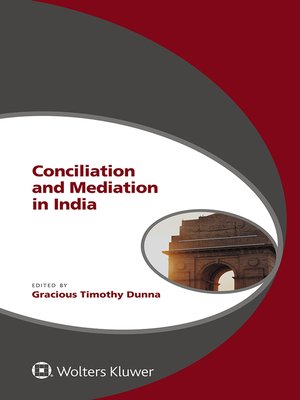Conciliation and Mediation in India
ebook ∣ Global Trends in Dispute Resolution Series
By Gracious Timothy Dunna

Sign up to save your library
With an OverDrive account, you can save your favorite libraries for at-a-glance information about availability. Find out more about OverDrive accounts.
Find this title in Libby, the library reading app by OverDrive.



Search for a digital library with this title
Title found at these libraries:
| Library Name | Distance |
|---|---|
| Loading... |
Global Trends in Dispute Resolution Series, Volume 11
It can be said that negotiation is about what to do, whereas mediation is about how to do it—how to make sure control is in the hands of the disputants. Although mediation (as well as conciliation) is taking hold in dispute resolution worldwide, among the nations, India shows the strongest signs of interest in developing a pervasive legal mediation culture. In this invaluable book, more than 20 formidable thought leaders with global reputations in dispute resolution describe how mediation is used, and can be used, to resolve different types of disputes in India and international cases.
With a focus throughout on the law and procedure applicable to conciliation and mediation in India—addressing the involvement of each of the stakeholders in the process (with relevant hints on practice)—the contributors examine such issues and topics as the following:
mediator ethics;
court-annexed mediation;
institutional mediation;
mediating commercial disputes;
mediating company, insolvency, and bankruptcy disputes;
mediating government disputes;
mediating investor-state disputes;
mediating family disputes;
e-mediation;
community mediation and citizen empowerment;
mixed-mode dispute resolution; and
cross-border enforcement of mediated settlements.
Two practice-oriented chapters synthesize the process, techniques, and approaches that experienced mediators and mediation advocates have found to be most valuable in their preparation for a mediation. Included is a detailed commentary on Part III of the Arbitration and Conciliation Act 1996 and the 2018 Singapore Convention on Mediation.
There is little doubt that mediation is the dispute resolution choice of the next-generation lawyer. Present-day lawyers, judges, and users are becoming increasingly convinced that early conflict resolution through facilitated negotiations avoids the pitfalls of adversarial modes of dispute resolution, especially in terms of user satisfaction. This book takes into account where India stands at present, covering statutes, international conventions, and academic literature, thus bequeathing a broad understanding of the subject for legal practitioners, judges, arbitrators, mediators and conciliators, users, and technical experts who wish to understand it.







